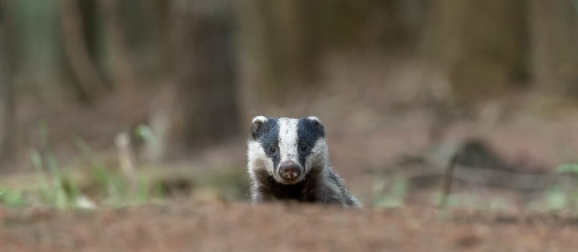A badger urgently looking for food is reported to have discovered a cache of 209 Roman coins in a cave in northern Spain, which academics have described as an "extraordinary find."

Ancient Roman Coins
The coins, which date from the third to fifth centuries AD, were discovered in a cave near Grado, Asturias' northern area. Months after Storm Filomena poured heavy snow across portions of the nation, they were found within feet from the den of a badger.
Badgers Foraging
The snow, according to researchers, drove the badger to increase its foraging efforts, causing it to poke at a small fissure near its cave in the hopes of finding berries or worms.
Instead, archaeologist Alfonso Fanjul Peraza told El Pas that the animal struck on a cache of worn Roman coins minted in sites as far apart as Constantinople and Thessaloniki.
Most of the coins are composed of copper and bronze, with the biggest weighing more than eight grams and a little under 4% silver thought to be manufactured in London.
In a newly released article, the researchers noted, "To date, this is the greatest treasure hoard of Roman coins unearthed in a cave in northern Spain."
Forest of Discoveries
It isn't the first time archaeologists have discovered riches in Grado's deep forests; 14 gold coins dating from Constantine's reign were found 85 years ago. "With care," Fanjul remarked, "the accumulation of large findings may be regarded as a reaction to the tremendous fighting occurring in the border zone."
In 218BC, the Romans invaded the Iberian peninsula and ruled until the Visigoths defeated them in the early fifth century. Recent coins have been suspected to be part of a bigger haul that was quickly stashed to keep them safe amid political and societal unrest.
According to Fanjul, the discovery represents the initial part of the study, and experts aim to return to the location for more digs later this year. "We want to determine if it was a one-time hiding spot or if it was home to a group of humans."
Serendipitous Discovery

Scientists who make discoveries at the crossroads of chance are referred to as "serendipity."
Serendipity awareness is linked to an understanding of the limitations of expectations about potential sources of information. As a defense of this term and its consequences, researcher Samantha Copeland analyzed serendipity in science, focusing on theoretical and empirical studies on serendipity encounters in science and elsewhere. In the study, she concentrated on three linked aspects of serendipity.
Aspects of Scientific Serendipity
First, there are several types of serendipity. Serendipitous discovery can be a complicated process. Second, before meditation on the importance of the unexpected observation or incident about that outcome can take place, a valued effect must be established. As a result, serendipity is classified retrospectively. Third, epistemic expectations' primacy is clarified. Finally, she contextualized her findings in philosophical analyses of the influence of interpersonal competition on the frequency and significance of scientific discoveries in the philosophy of science.
Related Article : 5 Most Important Fossil Discoveries in the World
For more prehistoric news, don't forget to follow Nature World News!
© 2025 NatureWorldNews.com All rights reserved. Do not reproduce without permission.





